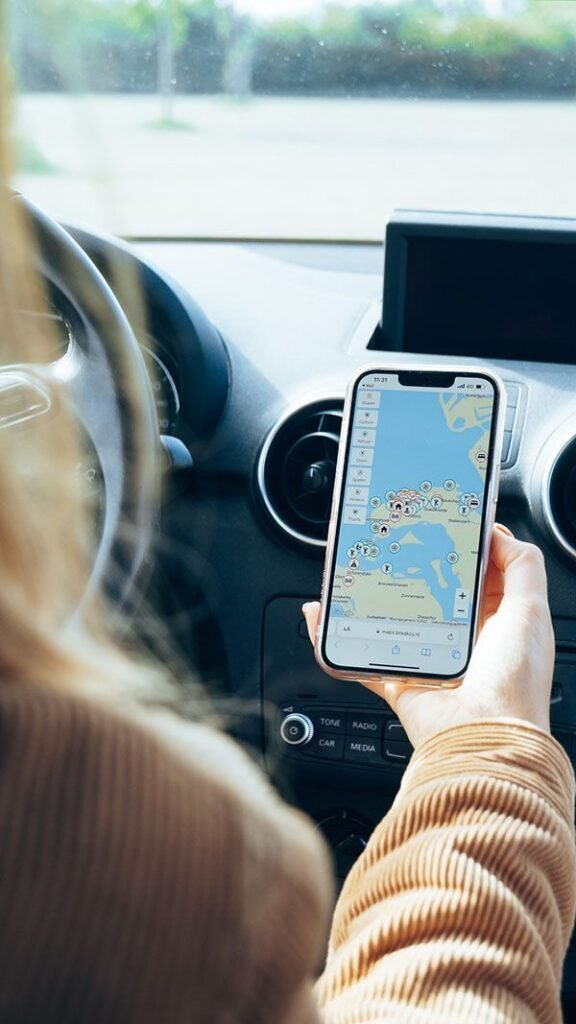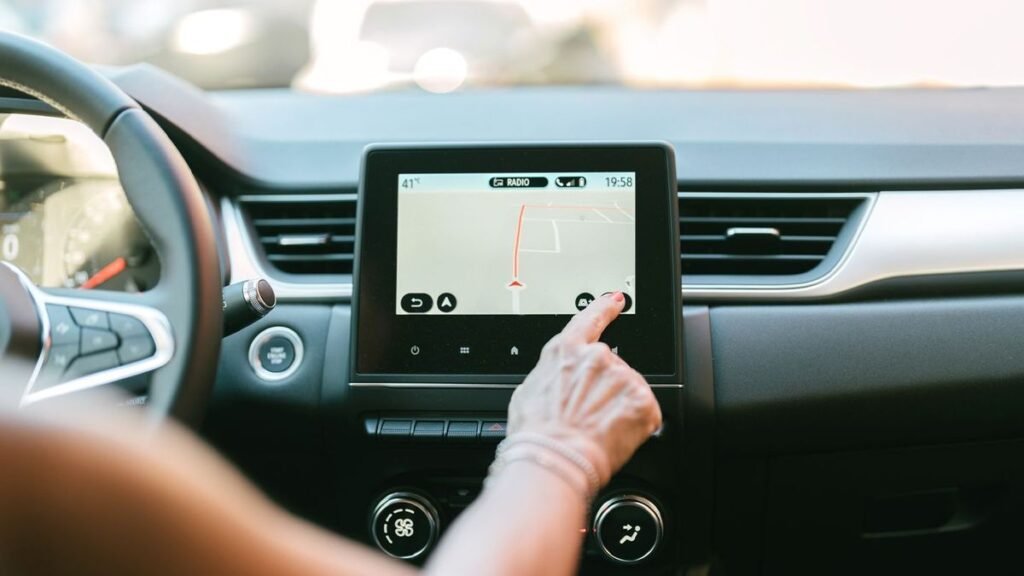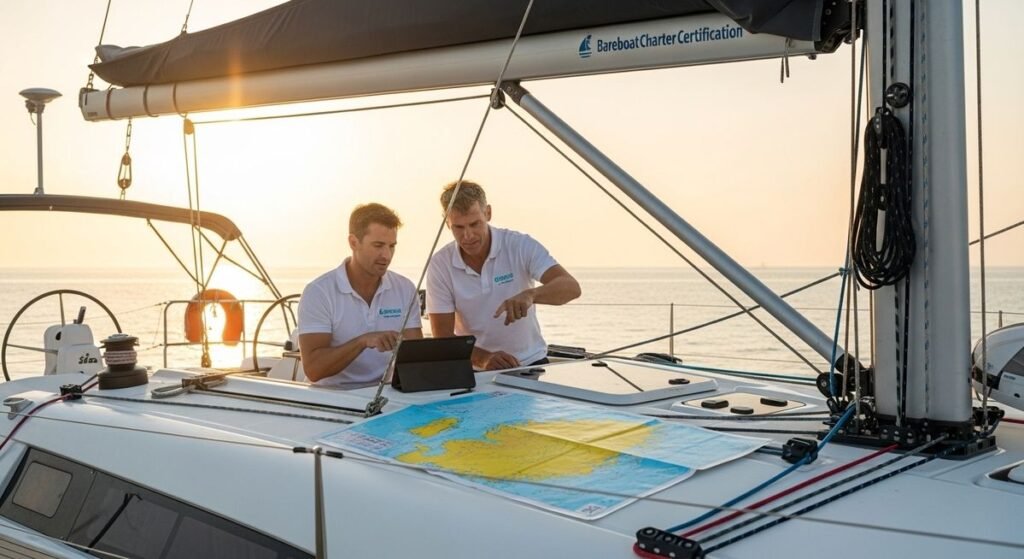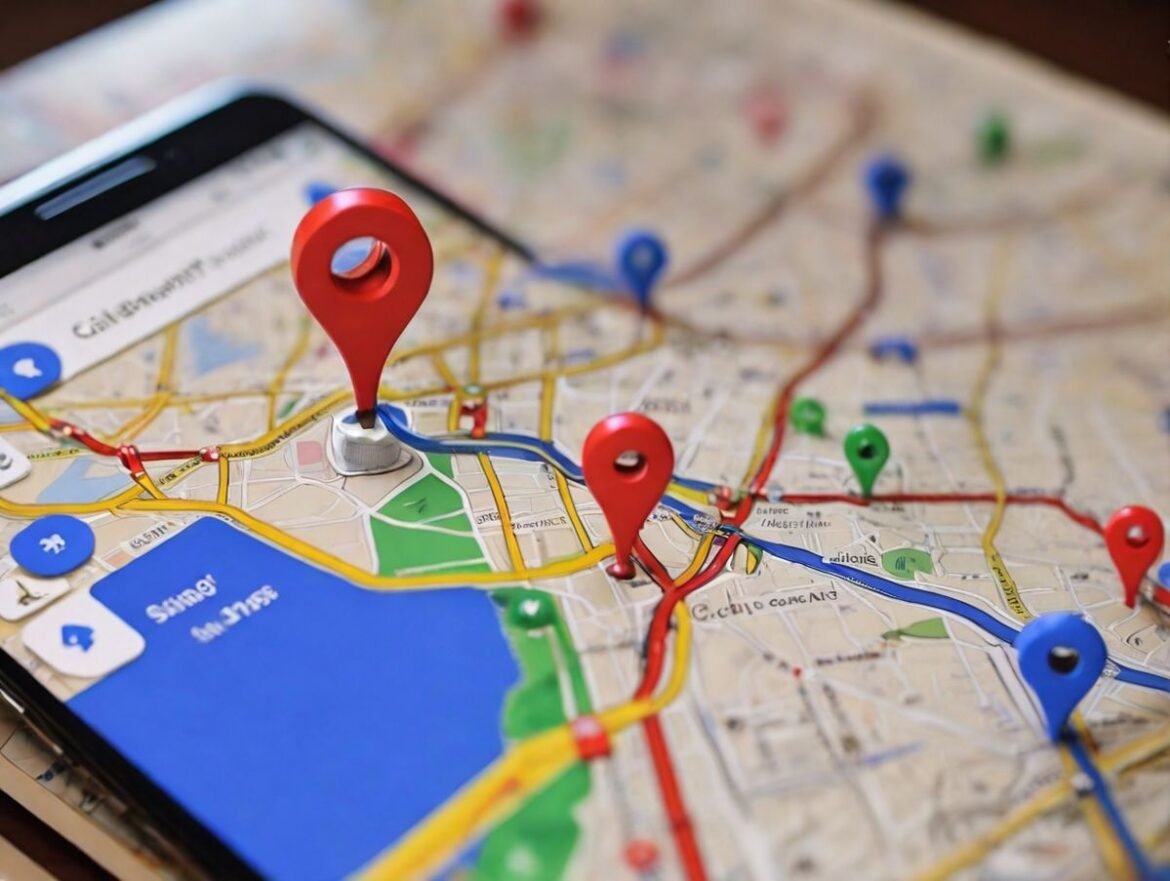Introduction
Traveling can be one of life’s most exciting experiences, whether it’s for business, leisure, or adventure. However, even the most seasoned travelers can encounter one of the most common yet frustrating challenges: navigation issues. Getting lost, relying on inaccurate GPS directions, or misreading maps can turn a smooth journey into a stressful ordeal.
While GPS technology and mobile maps have made navigation easier than ever, they are not foolproof. Technical glitches, outdated maps, weak signals, or unexpected road closures can leave travelers stranded or disoriented. Understanding how to deal with GPS inaccuracies and navigate unfamiliar places safely is essential for making your journeys enjoyable, efficient, and stress-free.
This guide explores the reasons behind navigation issues, practical solutions, and preventive strategies, ensuring that you remain confident and in control wherever you travel.
Traveling to new places is exciting, but even experienced travelers can face one of the most common challenges: navigation issues. Getting lost, relying on inaccurate GPS directions, or misreading maps can turn a smooth journey into a stressful experience. While technology has made navigation easier, GPS devices and mobile apps are not infallible and can fail due to weak signals, outdated maps, or human error. Understanding the causes of navigation problems and learning practical strategies to overcome them is essential for ensuring safe, efficient, and enjoyable travel in unfamiliar locations.

Common Causes of Navigation Issues
Even with the widespread use of GPS and mobile mapping apps, travelers frequently encounter navigation challenges. Understanding the common causes of these Navigation Issues can help prevent confusion and improve overall travel experiences.
One major factor is GPS signal problems. Dense urban areas with tall buildings, tunnels, remote locations, or thick forests can interfere with satellite signals, leading to delayed or inaccurate positioning. Even minor signal disruptions can result in wrong turns or missed exits.
Another common cause is outdated maps and apps. Navigation applications require regular updates to reflect new roads, construction zones, and changing traffic patterns. Using outdated software increases the likelihood of incorrect directions and can lead to unnecessary detours.
Human error also contributes significantly. Entering incorrect addresses, misreading directions, or misunderstanding route instructions can cause travelers to get lost, even in areas with strong GPS signals. Overreliance on technology can reduce situational awareness and critical thinking during navigation.
Environmental factors, such as adverse weather conditions, can further complicate navigation. Heavy rain, snow, fog, or poor lighting can obscure landmarks, road signs, and visual cues, making it harder to follow directions accurately.
Finally, device limitations can create navigation issues. Older smartphones or GPS devices may have slower processing, smaller or less detailed maps, and less precise location tracking, increasing the likelihood of errors.
By recognizing these common causes, travelers can take proactive measures—such as keeping apps updated, carrying backup maps, and remaining observant—to reduce navigation problems. Awareness of potential challenges allows for better preparation, ensuring that even in unfamiliar areas, travelers can navigate confidently and safely.
1. GPS Signal Problems
One of the most common reasons travelers get lost is weak or lost GPS signals. Dense urban areas with tall buildings, tunnels, remote locations, or thick forests can interfere with satellite signals, causing delays or inaccuracies in your device’s location.
2. Outdated Maps and Apps
Even modern GPS applications require regular updates. Using outdated maps can result in inaccurate directions, missing roads, or closed routes. Frequent app updates are essential for reliable navigation.
3. Human Error
Sometimes, navigation issues stem from user mistakes, such as misreading directions, entering incorrect addresses, or misunderstanding instructions. Overreliance on technology can reduce situational awareness.
4. Environmental Factors
Weather conditions such as heavy rain, fog, or snow can make landmarks difficult to see, and road conditions may change unexpectedly. Natural obstacles can also interfere with GPS accuracy.
5. Device Limitations
Older smartphones or GPS devices may have slower processing, smaller maps, and less precise location tracking, increasing the likelihood of errors.

Practical Solutions for GPS Inaccuracies
While GPS technology has transformed modern navigation, it is not infallible. Technical glitches, weak signals, or outdated maps can lead to inaccurate directions, leaving travelers frustrated and disoriented. Fortunately, several practical solutions can help minimize GPS inaccuracies and improve navigation reliability.
First, keeping maps and apps updated is essential. GPS applications frequently release updates to include new roads, construction changes, and traffic improvements. Regular updates ensure that your device reflects the most current information.
Second, using offline maps can prevent reliance on network connectivity. Downloading maps in advance, especially for remote or rural areas, allows navigation without data or cellular coverage, reducing the risk of getting lost when signals are weak.
Third, carrying a physical map provides a reliable backup. Traditional paper maps remain highly useful when technology fails, and basic map-reading skills can help travelers regain orientation quickly.
Fourth, always double-check directions. Cross-reference routes using multiple GPS apps, road signs, or by asking locals. This practice reduces errors caused by misreading directions or relying on a single source of information.
Fifth, allow extra travel time. Getting lost or rerouting due to GPS inaccuracies can delay your journey. Planning additional time ensures a stress-free experience even if unexpected detours occur.
Finally, developing situational awareness is crucial. Observing landmarks, street signs, and the surrounding environment enhances confidence and helps verify the accuracy of GPS directions.
By combining technology with preparedness, travelers can effectively mitigate GPS inaccuracies, maintain their sense of direction, and enjoy a smoother, safer journey. These practical solutions turn potential frustrations into manageable challenges, ensuring navigation remains a stress-free part of any trip.
1. Keep Maps Updated
Regularly updating your GPS app or offline maps ensures you have the most accurate information. Apps like Google Maps, Waze, or offline alternatives like Maps.me are essential tools for modern travelers.
2. Use Offline Maps
In areas with poor network coverage, offline maps are invaluable. Download maps ahead of time so that you can navigate without relying on mobile data.
3. Carry a Physical Map
A traditional paper map may seem old-fashioned, but it is a reliable backup when digital tools fail. Learning basic map-reading skills can prevent disorientation.
4. Double-Check Directions
Whenever possible, verify your route using multiple sources—GPS apps, road signs, or asking locals. Cross-referencing reduces mistakes.
5. Allow Extra Time
Getting lost can add stress, especially when traveling to appointments or flights. Allowing extra travel time ensures you stay calm if you need to reroute.
Dealing with Being Lost in Unfamiliar Places
Getting lost in an unfamiliar location can be stressful, but staying calm and composed is the first step toward resolving the situation. Panicking only increases confusion, so take a deep breath and assess your surroundings carefully.
A practical strategy is to retrace your steps to the last known landmark or familiar location. This often helps you regain orientation quickly. If available, consult your GPS or offline maps, but always cross-check with physical signs or landmarks.
Asking locals for directions is another effective solution. Residents often provide the fastest and most accurate guidance, whether for streets, public transport, or shortcuts. Polite interaction can save valuable time and reduce anxiety.
Identifying prominent landmarks such as buildings, statues, or natural features can also help maintain a sense of direction. Even if technology fails, these reference points guide you toward familiar areas.
Finally, remain patient and flexible. Sometimes the best solution is to take an alternate route or wait for clearer directions. By combining calm decision-making, observation skills, and practical tools, travelers can navigate unfamiliar areas safely and minimize the stress of being lost.
1. Stay Calm
Panic can worsen the situation. Take a deep breath, assess your surroundings, and remain calm to make rational decisions.
2. Retrace Your Steps
If you feel lost, backtrack to the last known location or landmark. Familiar points can help you regain orientation.
3. Ask Locals for Help
Residents often provide the fastest solution. Politely asking for directions can save time and reduce frustration.
4. Use Technology Wisely
Switch between GPS apps or use voice-guided navigation. Some apps provide alternate routes or real-time traffic updates that can help you find your way.
5. Identify Landmarks
Recognize buildings, statues, street signs, or natural features. Even if technology fails, landmarks can help you navigate and give confidence.

Preventive Strategies Before Traveling
Proper preparation is key to avoiding navigation issues while traveling. One of the most effective strategies is to plan your route in advance. Familiarize yourself with key turns, intersections, landmarks, and public transport options before you set out. This reduces reliance on GPS and helps you stay oriented.
Sharing your travel route with friends or family is another important precaution. By letting someone know your expected path, you add an extra layer of safety in case you encounter difficulties or get lost.
Carrying essential items like a physical map, portable charger, and emergency supplies can also prevent minor setbacks from becoming major problems. Offline maps or printed guides serve as reliable backups when technology fails.
Understanding the local geography and street layout before arrival helps you navigate more confidently, while traveling during daylight hours increases visibility and reduces errors caused by poor lighting.
Finally, allocating extra travel time ensures that unforeseen delays, such as getting lost or taking a detour, do not create unnecessary stress. By implementing these preventive measures, travelers can reduce the risk of navigation problems, feel more confident, and enjoy a smoother, safer journey.
1. Plan Your Route in Advance
Knowing your route ahead of time reduces reliance on GPS in unfamiliar areas. Take note of key turns, intersections, and landmarks.
2. Share Your Location
For safety, share your travel route with friends or family. They can assist if you encounter navigation issues.
3. Prepare for Emergencies
Carry a portable charger, backup maps, and essential supplies in case you are stranded or technology fails.
4. Learn Basic Local Geography
Understanding the layout of streets, major landmarks, and transportation hubs helps you navigate more confidently.
5. Travel During Daylight When Possible
Navigating in daylight reduces errors caused by poor visibility, unfamiliar terrain, or missing signs.
Technology Tips to Improve Navigation
Modern technology has made navigation easier, but using it effectively requires a few smart strategies. First, use multiple navigation apps. Cross-checking directions on Google Maps, Waze, or Apple Maps helps reduce errors and provides real-time traffic updates, alternative routes, and hazard alerts.
Second, enable high-accuracy GPS settings on your device. Most smartphones allow you to combine satellite, Wi-Fi, and mobile networks for precise location tracking, improving reliability even in challenging areas.
Third, download offline maps for areas with poor network coverage. Apps like Maps.me or Google Maps offline mode ensure you can navigate seamlessly without internet access.
Fourth, utilize compass and orientation tools. Many navigation apps feature built-in compasses or augmented reality directions, which help maintain a sense of direction when GPS lags or signals are weak.
Finally, keep your device updated. Software updates improve GPS performance, fix bugs, and enhance app compatibility. Additionally, carrying a portable charger ensures your devices remain powered during long journeys, reducing the risk of being stranded without navigation assistance.
By combining these technology tips with situational awareness, travelers can navigate unfamiliar areas confidently, reduce stress, and enhance the overall travel experience.
1. Use Multiple Apps
Cross-check your location using multiple apps to minimize errors. Some apps also provide user-generated updates about road closures, traffic, and hazards.
2. Enable GPS Accuracy Settings
Most smartphones allow high-accuracy GPS modes, which combine satellite, Wi-Fi, and mobile networks to improve location precision.
3. Download Offline Street Guides
Offline guides provide turn-by-turn directions without network dependency. This is particularly useful in remote areas or while traveling abroad.
4. Utilize Compass and Orientation Tools
Apps with a compass feature can help you maintain a sense of direction even when GPS is delayed or inaccurate.
5. Update Device Software
Regular updates ensure your device’s hardware and software work efficiently, reducing navigation errors.
Real-Life Scenarios and Case Studies
Navigation issues can occur in a variety of travel situations, highlighting the importance of preparedness and adaptability. Consider the case of a traveler exploring a foreign city who relied solely on GPS. Road closures and incorrect directions left them disoriented in a busy downtown area. By asking locals for guidance, retracing steps, and consulting an offline map, they were able to safely reach their destination, demonstrating the value of combining technology with human assistance.
In rural areas, GPS signal loss is a frequent challenge. One driver navigating a remote countryside missed a critical turn due to weak satellite connectivity. Instead of panicking, they used a physical map, observed surrounding landmarks, and identified natural features to correct their route. This scenario emphasizes the importance of carrying backup navigation tools and being attentive to the environment.
Hikers and adventure travelers also face unique navigation challenges. On a dense forest trail without cellular coverage, a group of hikers risked losing their way. By preparing in advance with a printed trail map, compass, and marked waypoints, they successfully completed their hike without incident. Their experience illustrates how combining traditional navigation skills with modern planning ensures safety in remote or challenging terrains.
These real-life scenarios highlight that GPS technology alone is not always sufficient. Successful navigation requires a balance of preparation, situational awareness, and flexibility. Travelers who plan ahead, carry backups, and remain calm when disoriented are more likely to turn potential setbacks into learning experiences. By studying these cases, anyone can develop strategies to navigate unfamiliar places confidently, reduce stress, and enhance the overall travel experience.
Scenario 1: Lost in a Foreign City
A traveler relying solely on GPS found themselves in an unfamiliar city center with road closures and incorrect directions. By consulting locals, retracing steps, and using offline maps, they reached their destination safely.
Scenario 2: GPS Malfunction in Rural Areas
While driving through a remote area, GPS signal loss caused the traveler to miss a critical turn. Using a physical map and recognizing natural landmarks, they navigated back to the main route without delay.
Scenario 3: Hiking in Nature Trails
In areas without cellular coverage, hikers often lose GPS signals. Planning the route, using compass skills, and marking trail points prevented them from getting lost and ensured safety.
These examples highlight the importance of preparedness, adaptability, and combining technology with traditional navigation methods.
Tips for Traveling Abroad
- Familiarize Yourself with Local Transport: Understand bus, train, and metro networks in advance.
- Carry a Phrasebook or Translation App: Helps in asking directions when locals don’t speak your language.
- Note Emergency Services: Know the contact numbers for local authorities in case of serious navigation issues.
- Blend Technology with Observation: Don’t rely solely on GPS—pay attention to street signs, landmarks, and maps.
- Travel with a Companion: Navigating unfamiliar areas with someone else reduces stress and improves decision-making.
Conclusion
Navigation issues, whether caused by GPS inaccuracies, unfamiliar surroundings, or human error, are common challenges that can disrupt any journey. However, with the right preparation, tools, and strategies, travelers can navigate confidently and minimize stress.
The key lies in combining modern technology with traditional skills, such as map reading, landmark recognition, and situational awareness. Staying calm, planning ahead, and being adaptable ensures that travelers reach their destinations safely and enjoyably.
By understanding the causes of navigation problems and implementing preventive measures, anyone can transform a potentially frustrating experience into an opportunity for learning, exploration, and adventure. Whether traveling for business, leisure, or exploration, mastering navigation is essential for turning every journey into a seamless and rewarding experience.
Related Post: 7 Top Causes of Google Maps Not Working and How to Fix Them

